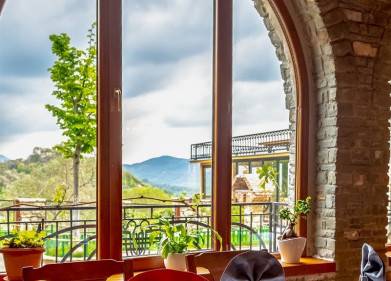The capital city of Albania is Tirana. The official language is Albanian also called Shqip or Shqipe by locals. Its nearly 3 million inhabitants are predominantly Muslim, however, Albania is known as a religiously tolerant nation, and freedom of religion is upheld by the law. The Lek is the official currency recognized by the Bank of Albania.
Its capital and largest city Tirana is linked to other industrial cities in the country by rail. The Tirana International Airport is one of the busiest airport in the region and handles international flight into the country. The road network in the country also extends to remote villages, so travelling by road is a good way to explore the country. Ferries also serve to connect islands and coastal cities.
Albania has a Mediterranean climate and has four distinct seasons with hot summers and cool winters. Dress how ever is comfortable and fit for the weather, however, when visiting religious places, the dressing should be conservative. The Albanian traditional dress uses materials such as wool, silk and cotton with embroidery. Folk music and folklore are important aspects of the Albanian culture. A number of festivals are celebrated in the country, such as:
- Dita e Verës (Spring Day) is celebrated in mid-March in Elbasan.
- The National Festival of Folklore held in Gjirokastër, a historic town that was designated a UNESCO World Heritage site in 2005.
- Albania’s Independence Day celebrated on November 28.
Meat and seafood are common parts of the diet in Albania. Raki, a traditional alcoholic drink is a popular drink in Albania.
Tirana is the home of a number of cultural institutions, including the National Library, the National Theatre, the Opera and Ballet Theatre, the National Museum of History, and the National Museum. Some other places of interest are:
- The four islands of Ksamil: four rocky islands close to the Ionian Sea; has beautiful sandy beaches and clear water where you can swim and snorkel.
- Lake Koman: you can take a ferry ride through the lake and explore the evergreen scenery.
- The Resurrection Cathedral of Tirana is the third largest Orthodox church in Europe.
- The Fortress of Bashtovë: one of the many ancient castles in the country which are considered to be cultural monuments.
- The ancient Amphitheatre of Durrës: this ancient Roman amphitheatre was built in the second century. It is the biggest amphitheatre in the Balkans. It was rediscovered in 1966.
- The Monastery of Rubik: a cultural and architectural monument constructed in 1166.
There are many accommodation options across the country, as Albania is popular among tourists who rave about the country.



